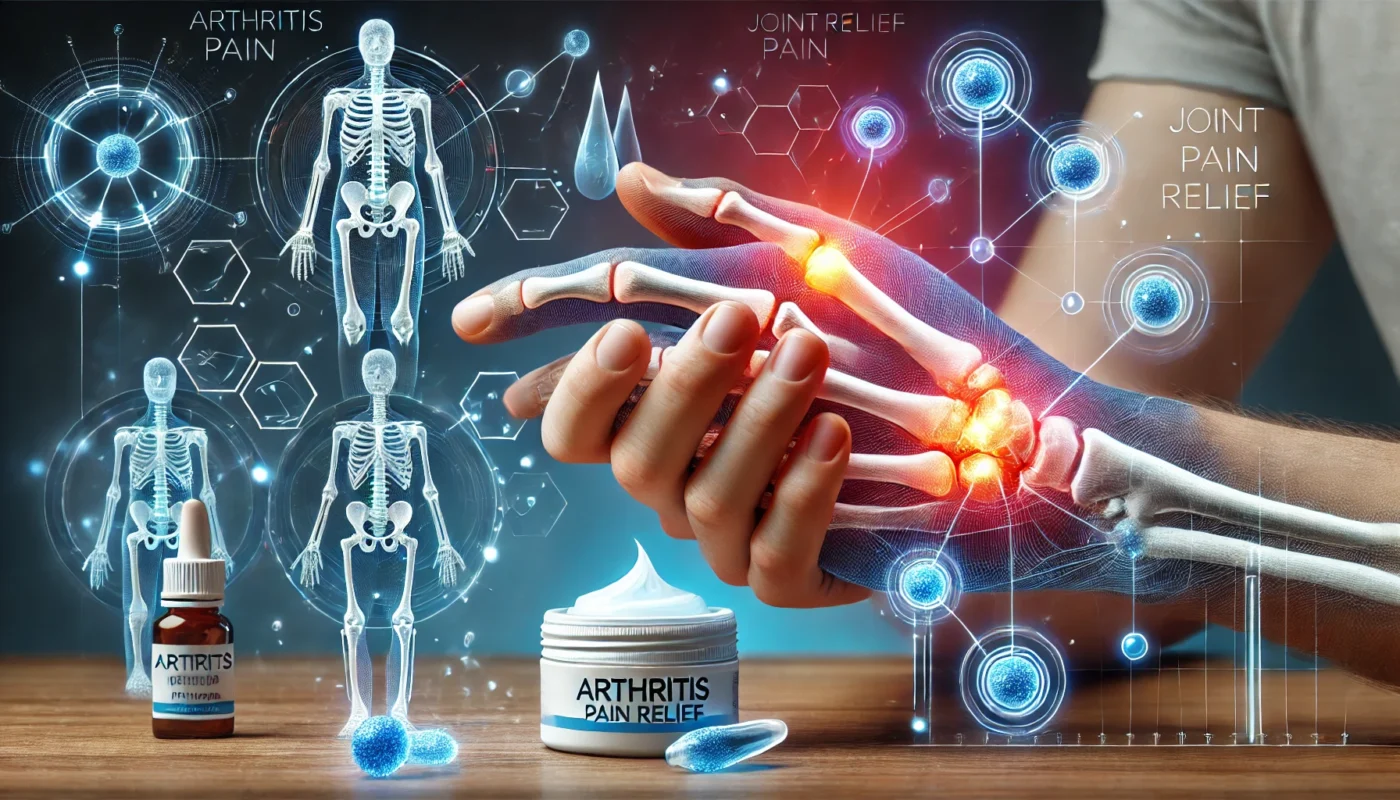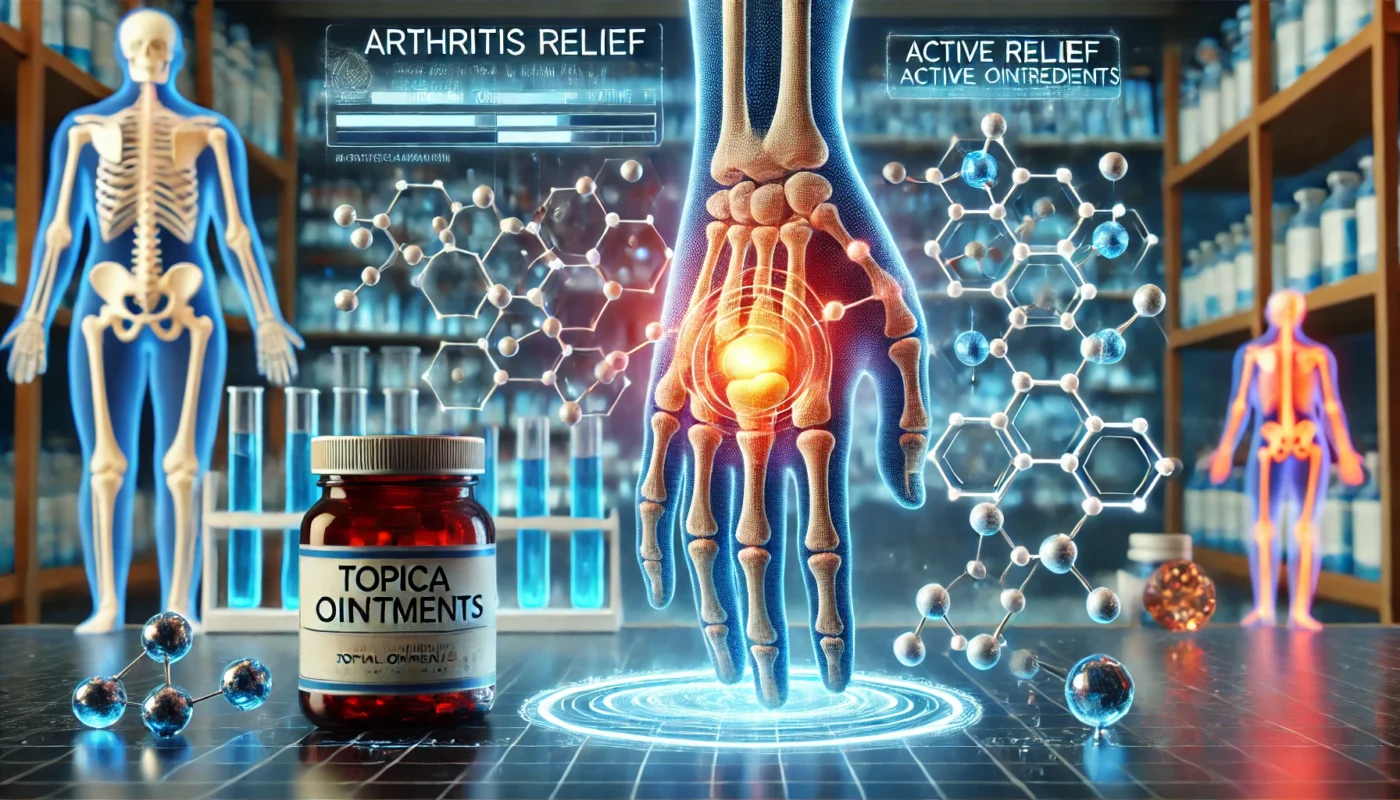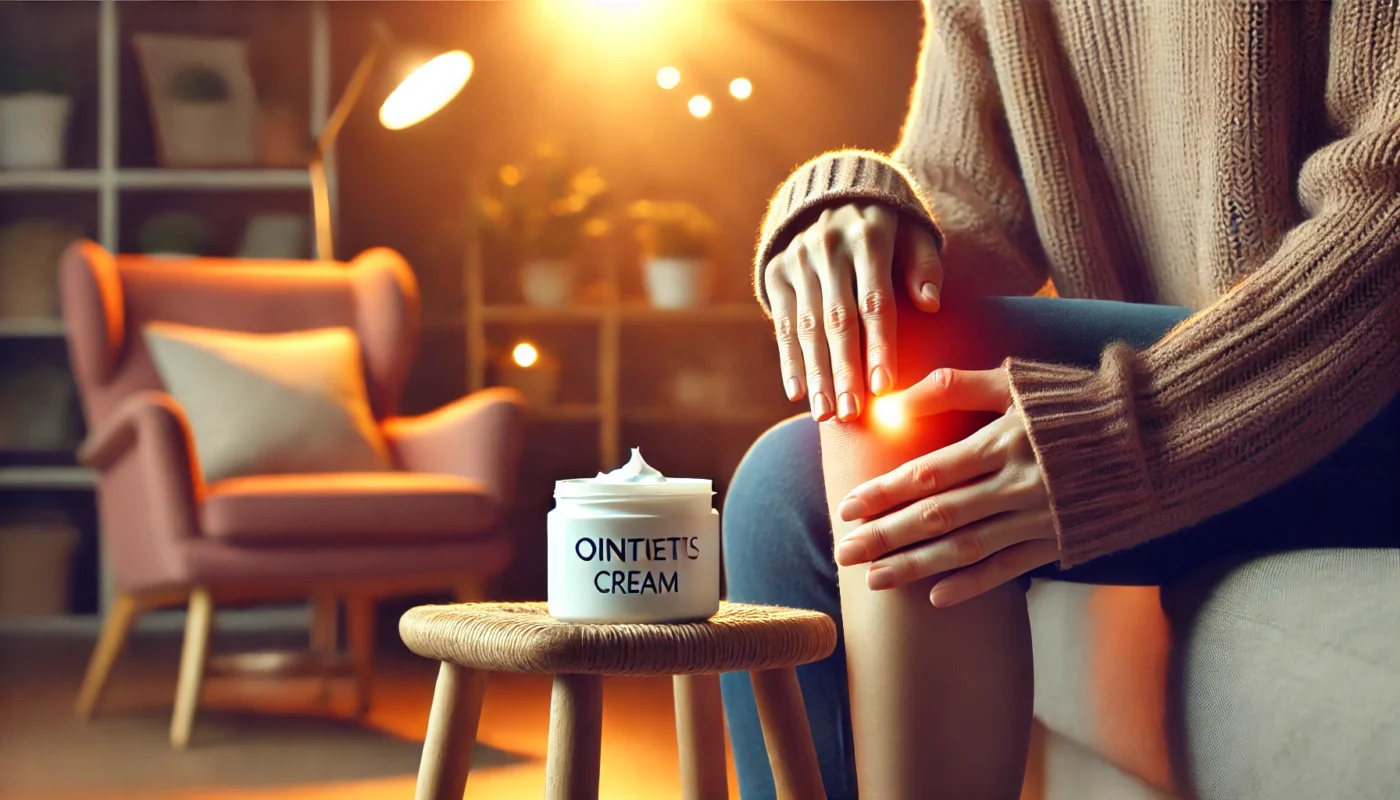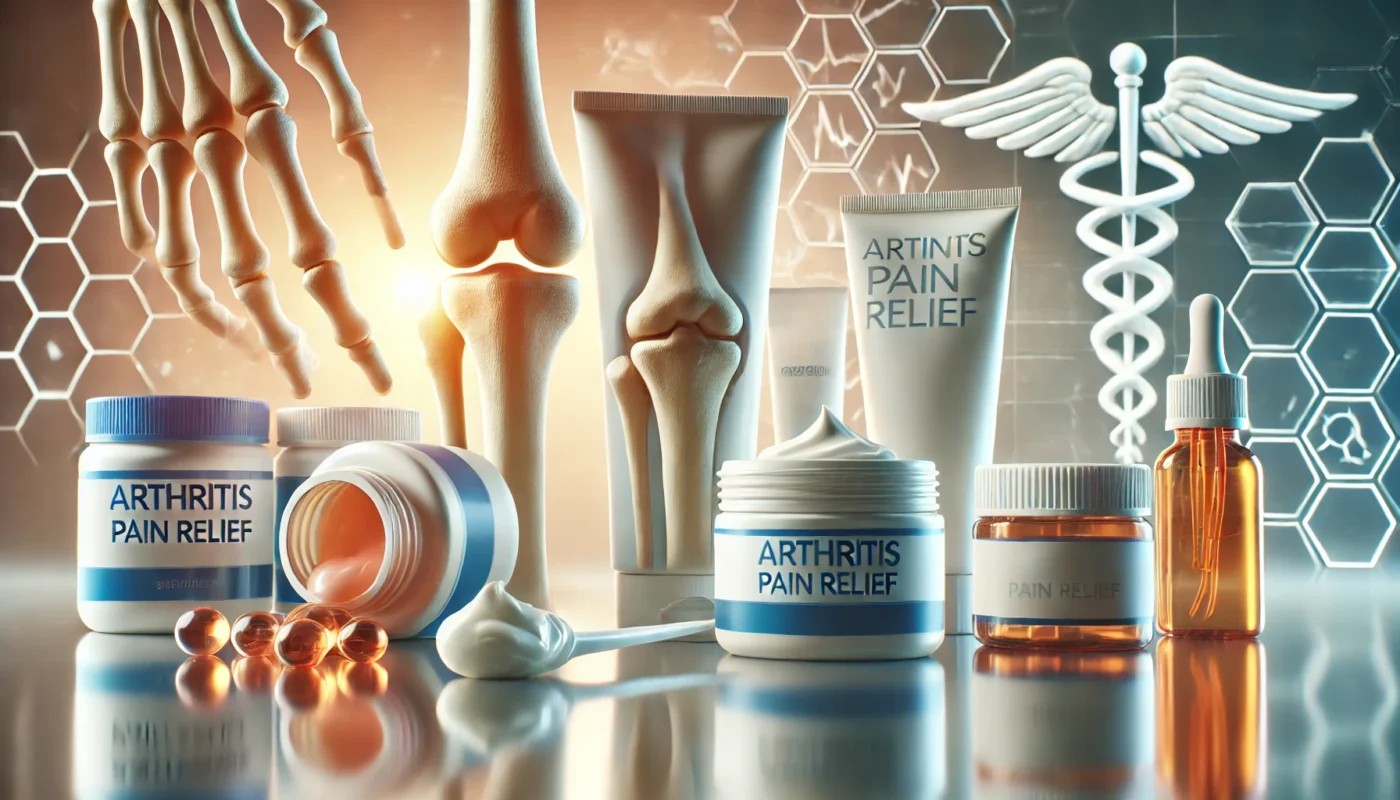Arthritis is a broad term encompassing over 100 different types of joint-related conditions. Among the most common are osteoarthritis and rheumatoid arthritis, each presenting unique symptoms and challenges. While osteoarthritis results from wear and tear of the cartilage, rheumatoid arthritis is an autoimmune disorder where the body attacks its own tissues.
You may also like: Understanding Long-Term Pain Relief Options
Types of Arthritis
There are numerous types of arthritis, each with its unique causes and symptoms. Osteoarthritis is characterized by the degeneration of cartilage, typically affecting older adults. Rheumatoid arthritis, on the other hand, is an autoimmune condition, often starting at a younger age and leading to inflammation. Other types include gout, which is caused by uric acid crystal accumulation, and psoriatic arthritis, linked to the skin condition psoriasis.
Symptoms and Diagnosis
Common symptoms of arthritis include joint pain, stiffness, swelling, and decreased range of motion. The severity of these symptoms can vary, impacting daily activities. Diagnosis often involves a combination of medical history, physical examination, imaging tests, and laboratory tests. Early diagnosis is crucial for effective management, as it allows for timely intervention to slow disease progression.
The Impact on Daily Life
Arthritis can significantly affect daily life, limiting physical activity and reducing quality of life. Individuals may experience difficulty in performing routine tasks, such as walking, climbing stairs, or even gripping objects. This can lead to frustration, emotional distress, and a sense of helplessness. Understanding the challenges posed by arthritis is essential for developing effective coping strategies and seeking appropriate treatment.
The Role of Topical Treatments
Topical treatments, such as ointments and creams, play a crucial role in managing arthritis pain. They offer a localized approach, providing relief directly to the affected area without systemic side effects that are often associated with oral medications. This makes them an appealing option for many individuals seeking immediate and targeted relief.

Advantages of Topical Treatments
Topical treatments offer several advantages over oral medications. They target specific areas, reducing the risk of systemic side effects like gastrointestinal issues often associated with NSAIDs. Additionally, they provide fast relief, as they are absorbed directly through the skin. This makes them an excellent choice for those who prefer non-invasive treatment options.
Limitations and Considerations
Despite their benefits, topical treatments have limitations. They may not be as effective for deep joint pain or severe cases of arthritis. It’s also essential to use them as directed, as overuse can lead to skin irritation. Individuals with sensitive skin should be cautious and test a small area before widespread application. Consulting with a healthcare provider can help determine the suitability of topical treatments for individual needs.
Combining Topical Treatments with Other Therapies
For enhanced effectiveness, topical treatments can be combined with other therapies. Physical therapy, exercise, and dietary changes can complement the effects of ointments, providing a comprehensive approach to pain management. This holistic strategy addresses not only the symptoms but also the underlying causes of arthritis, promoting overall joint health.
Key Ingredients in Arthritis Ointments
When selecting a pain relief ointment for arthritis, understanding the active ingredients can guide you toward the best choice for your needs.
Nonsteroidal Anti-Inflammatory Drugs (NSAIDs)
NSAIDs are a common component in many over-the-counter arthritis creams. They work by reducing inflammation and pain in the joints. Examples include diclofenac, which is found in products like Voltaren Gel.
How NSAIDs Work
NSAIDs inhibit the production of prostaglandins, chemicals in the body that promote inflammation, pain, and fever. By blocking these chemicals, NSAIDs effectively reduce pain and swelling in affected joints. This makes them particularly useful for managing mild to moderate arthritis pain.
Potential Side Effects
While effective, NSAIDs can cause side effects, particularly with prolonged use. These may include skin irritation, redness, and dryness at the application site. It’s essential to follow the recommended dosage and consult a healthcare professional if any adverse reactions occur. Individuals with known allergies to NSAIDs should avoid these products.
Popular NSAID-Based Ointments
Several NSAID-based ointments are popular choices for arthritis pain relief. Voltaren Gel, for instance, is widely used for osteoarthritis in the hands and knees. Its non-greasy formula and ease of application make it a preferred option for many. Other options include products containing ibuprofen or ketoprofen, each offering similar benefits.
Capsaicin
Derived from chili peppers, capsaicin works by depleting substance P, a neurotransmitter that transmits pain signals. Regular application can result in significant pain relief, although initial application may cause a burning sensation.
Mechanism of Action
Capsaicin works by reducing the levels of substance P in the body, a chemical involved in transmitting pain signals to the brain. By lowering these levels, capsaicin effectively diminishes the sensation of pain over time. This makes it a suitable option for chronic pain management.
Application Tips and Precautions
When using capsaicin-based products, it’s essential to start with a small amount to gauge tolerance. The burning sensation, while temporary, can be intense for some users. Avoid applying it to sensitive areas or broken skin, and wash hands thoroughly after use to prevent accidental contact with the eyes or mouth.
Notable Capsaicin Products
Several products contain capsaicin as the active ingredient, offering varying concentrations for different pain levels. Zostrix and Capzasin-HP are well-known brands, providing options for those seeking natural pain relief. These products are often recommended for individuals looking for an alternative to traditional pain medications.
Menthol and Methyl Salicylate
These ingredients provide a cooling and heating effect that can temporarily relieve minor aches and pains. Products like Bengay and Icy Hot contain these ingredients and offer quick, though temporary, relief.
Dual Sensation Benefits
Menthol and methyl salicylate create a dual sensation of cooling followed by warming, which can distract from pain and provide soothing relief. This effect helps increase blood flow to the affected area, promoting healing and relaxation of tense muscles.
Usage Guidelines
To maximize benefits, apply menthol and methyl salicylate ointments in a thin layer and massage gently into the skin. Avoid using them in conjunction with heating pads or bandages, as this can intensify the sensation and potentially cause burns. Always follow the manufacturer’s instructions for optimal results.
Popular Products and Their Uses
Bengay and Icy Hot are among the most popular products containing menthol and methyl salicylate. These ointments are commonly used by athletes and individuals with active lifestyles to relieve muscle soreness and joint pain. Their fast-acting nature makes them ideal for on-the-go pain relief.
Lidocaine
Lidocaine is a local anesthetic that numbs the area it is applied to, providing relief from pain without affecting other areas of the body. It’s a key ingredient in products like Aspercreme with Lidocaine.
How Lidocaine Provides Relief
Lidocaine works by blocking nerve signals in the body, effectively numbing the area to which it is applied. This temporary numbing effect offers targeted relief, making it ideal for acute pain episodes or localized discomfort.
Application Tips
For best results, apply lidocaine-based products in a thin layer and allow them to absorb fully before covering the area with clothing. Avoid using on large areas of the body or in conjunction with other topical anesthetics to prevent potential side effects. Always adhere to dosage recommendations and consult a healthcare provider if needed.
Leading Lidocaine Products
Aspercreme with Lidocaine is a leading product in this category, known for its odor-free formula and quick absorption. Other products, like Lidocaine Plus and Salonpas Lidocaine, offer similar benefits, providing options for those seeking fast-acting and effective pain relief.
Evaluating Effectiveness: Top Arthritis Creams
With so many options on the market, choosing the right ointment can be overwhelming. Here are some of the top-rated pain relief ointments for arthritis.

Voltaren Gel
As a leading topical NSAID, Voltaren Gel is clinically proven to relieve arthritis pain. It’s particularly effective for osteoarthritis in the hands, knees, and other joints, offering a non-greasy formula that’s easy to apply.
Clinical Evidence and User Feedback
Voltaren Gel has been the subject of numerous clinical trials, demonstrating its effectiveness in reducing pain and improving joint function in osteoarthritis patients. User reviews often highlight its fast-acting nature and ease of use, making it a go-to option for many.
Application and Dosage
For optimal results, apply Voltaren Gel to the affected area four times daily. The gel should be massaged gently into the skin until fully absorbed. It’s important to avoid using it on damaged skin and to wash hands thoroughly after application.
Considerations and Precautions
While Voltaren Gel is effective, it’s not suitable for everyone. Individuals with known allergies to diclofenac or other NSAIDs should avoid using this product. Consulting with a healthcare provider can help determine if Voltaren Gel is the right choice for your specific needs.
Tiger Balm Arthritis Rub
Tiger Balm combines camphor and menthol to provide both cooling and heating sensations, easing joint pain and stiffness. Its herbal formulation appeals to those seeking a more natural approach to pain relief.
Unique Herbal Formulation
Tiger Balm’s unique blend of herbal ingredients, including camphor and menthol, offers a natural alternative to synthetic pain relievers. This formulation provides soothing relief and promotes relaxation, making it a popular choice for individuals seeking holistic pain management.
Application Techniques
Apply Tiger Balm in a thin layer to the affected area, massaging gently to enhance absorption. It’s essential to avoid contact with sensitive areas, such as the eyes and mucous membranes. The balm’s strong scent may not be suitable for everyone, so consider personal preferences when choosing this product.
User Experiences and Effectiveness
Many users report positive experiences with Tiger Balm, noting its ability to alleviate pain and improve mobility. Its versatility makes it a useful addition to any pain management routine, particularly for those who prefer herbal remedies.
Biofreeze Pain Relief Gel
Biofreeze utilizes menthol for its cooling effect, which helps reduce joint pain and muscle soreness. It’s a popular choice among athletes and fitness enthusiasts for its fast-acting, long-lasting relief.
Cooling Mechanism and Benefits
The menthol in Biofreeze creates a cooling sensation that temporarily reduces pain and inflammation. This effect can help improve blood flow and promote faster recovery after physical activity, making it ideal for athletes and active individuals.
Application and Frequency
Biofreeze should be applied to the affected area three to four times daily, ensuring even coverage. The gel’s quick-drying formula makes it convenient for on-the-go use, allowing for discreet application without leaving a residue.
Athlete Endorsements and Popularity
Biofreeze is endorsed by numerous athletes and healthcare professionals, attesting to its effectiveness and reliability. Its popularity stems from its ability to provide fast relief without the use of NSAIDs, appealing to those seeking alternative pain management solutions.
Penetrex Pain Relief Cream
Penetrex stands out for its blend of natural ingredients, including arnica, vitamin B6, and MSM, which work together to reduce inflammation and support joint health. It’s a versatile option for various types of arthritis pain.
Natural Ingredients and Their Benefits
Penetrex’s formulation includes natural ingredients known for their anti-inflammatory and pain-relieving properties. Arnica helps reduce swelling, while vitamin B6 and MSM support joint health and promote healing. This combination offers a holistic approach to arthritis pain management.
Usage Recommendations
For best results, apply Penetrex to the affected area three to four times daily, massaging gently to enhance absorption. Its non-greasy formula makes it suitable for use under clothing, allowing for continuous pain relief throughout the day.
Customer Reviews and Satisfaction
Users often praise Penetrex for its effectiveness and natural formulation, noting significant improvements in pain levels and mobility. Its versatility makes it a suitable option for various types of arthritis, catering to individual preferences for natural remedies.
Aspercreme with Lidocaine
Offering targeted numbing relief, Aspercreme with Lidocaine is ideal for those seeking immediate pain alleviation without the strong scent associated with other ointments. It’s particularly effective for hand arthritis.
Rapid Numbing Action
Aspercreme with Lidocaine provides rapid numbing relief by blocking nerve signals in the affected area. This action makes it ideal for acute pain episodes or localized discomfort, offering fast and effective pain management.
Application Tips and Frequency
Apply Aspercreme with Lidocaine to the affected area up to four times daily, ensuring even coverage. The odor-free formula makes it suitable for discreet use, allowing for continuous relief without the strong scent associated with other products.
User Experiences and Recommendations
Many users appreciate Aspercreme’s fast-acting nature and ease of application, making it a preferred choice for hand arthritis and other localized pain. Its effectiveness and lack of scent contribute to high levels of customer satisfaction and repeat use.
Practical Tips for Using Arthritis Creams
To maximize the benefits of arthritis ointments, consider the following application tips:
- Read the Instructions: Always follow the manufacturer’s instructions regarding the amount and frequency of application.
- Clean the Area: Ensure that the skin is clean and dry before applying the ointment to enhance absorption.
- Avoid Broken Skin: Do not apply creams to open wounds or irritated skin to prevent adverse reactions.
- Wash Hands: After applying the cream, wash your hands thoroughly to avoid accidental contact with your eyes or mouth.
Choosing the Right Product
Selecting the right arthritis ointment involves considering factors such as the type of arthritis, severity of symptoms, and personal preferences. Understanding the active ingredients and their effects can help guide your choice. Consulting with a healthcare provider can also provide valuable insights, ensuring the chosen product aligns with your specific needs.

Application Techniques
Proper application techniques can enhance the effectiveness of arthritis creams. Applying the ointment in a thin, even layer and massaging it gently into the skin promotes absorption and maximizes benefits. It’s important to follow the manufacturer’s instructions for optimal results and to prevent potential side effects.
Monitoring and Adjusting Usage
Monitoring the effects of the chosen ointment can help determine its effectiveness. If you experience any adverse reactions or if symptoms persist, consider adjusting the frequency or trying a different product. Continuous evaluation and adjustment can ensure optimal pain management and improve overall quality of life.
Holistic Approaches to Complement Topical Treatments
Incorporating holistic practices alongside topical treatments can further enhance pain management for arthritis.
Physical Therapy
Engaging in regular physical therapy can help maintain joint function and reduce stiffness. A physical therapist can design a personalized exercise program to strengthen the muscles around the joints.
Benefits of Physical Therapy
Physical therapy offers numerous benefits for arthritis patients, including improved joint flexibility, increased strength, and reduced pain. Tailored exercise programs can target specific areas affected by arthritis, enhancing mobility and overall function.
Finding the Right Therapist
Choosing a qualified physical therapist with experience in arthritis management is crucial for effective treatment. A therapist can provide guidance on exercises, stretches, and techniques tailored to individual needs, ensuring a comprehensive approach to pain management.
Integrating Therapy into Daily Life
Incorporating physical therapy exercises into daily routines can maximize benefits and promote long-term joint health. Consistency is key, and regular practice can lead to significant improvements in pain levels and quality of life over time.
Dietary Considerations
An anti-inflammatory diet rich in omega-3 fatty acids, antioxidants, and phytonutrients can support joint health. Foods such as fatty fish, leafy greens, and nuts are excellent choices.
Anti-Inflammatory Foods and Their Benefits
Incorporating anti-inflammatory foods into your diet can help reduce arthritis symptoms. Omega-3 fatty acids, found in fatty fish like salmon and mackerel, have been shown to reduce inflammation. Antioxidant-rich fruits and vegetables, such as berries and leafy greens, can also support joint health.
Creating a Balanced Diet
Creating a balanced diet that includes a variety of nutrient-dense foods is essential for overall health and well-being. Incorporating whole grains, lean proteins, and healthy fats can provide the necessary nutrients to support joint function and reduce inflammation.
Consulting with a Nutritionist
Working with a nutritionist can help tailor a diet plan to individual needs, ensuring optimal nutrition and effective management of arthritis symptoms. A nutritionist can provide guidance on food choices, portion sizes, and meal planning, promoting long-term health benefits.
Mind-Body Techniques
Practices such as yoga, tai chi, and meditation can help manage stress and improve joint flexibility, contributing to overall well-being.
Stress Reduction and Pain Management
Mind-body techniques can play a significant role in managing arthritis pain by reducing stress and promoting relaxation. Practices like yoga and tai chi combine physical movement with mental focus, enhancing flexibility and reducing tension in the body.
Incorporating Mind-Body Practices
Incorporating mind-body practices into daily routines can provide long-term benefits for arthritis patients. Regular practice can improve joint mobility, increase strength, and enhance overall well-being. Finding a class or program tailored to individual needs can ensure a safe and effective experience.
Exploring Different Techniques
Exploring different mind-body techniques can help individuals find the most suitable practice for their needs. Whether it’s yoga, tai chi, or meditation, each offers unique benefits and can contribute to a comprehensive pain management strategy.
Conclusion
Selecting the right pain relief ointment for arthritis involves understanding the active ingredients and their effects. Combining topical treatments with holistic approaches can offer a comprehensive strategy for managing arthritis pain. With the right knowledge and resources, you can take an active role in improving your quality of life and maintaining joint health.
Remember, always consult with a healthcare professional before starting any new treatment to ensure it aligns with your specific health needs. Empower yourself with information and take control of your arthritis management journey for a healthier, more active life.
Further Reading:
Diclofenac Topical (arthritis pain)
Topical Pain Relief for Arthritis
9 Best Arthritis Creams of 2024, According to Experts
arthritis, pain relief, topical treatments, Penetrex, Aspercreme, physical therapy, anti-inflammatory diet, mind-body techniques, joint health, customer reviews, application tips, holistic approaches, pain management, nutrition, stress reduction, mobility
Important Note: The information contained in this article is for general informational purposes only, and should not be construed as health or medical advice, nor is it intended to diagnose, prevent, treat, or cure any disease or health condition. Before embarking on any diet, fitness regimen, or program of nutritional supplementation, it is advisable to consult your healthcare professional in order to determine its safety and probable efficacy in terms of your individual state of health.
Regarding Nutritional Supplements Or Other Non-Prescription Health Products: If any nutritional supplements or other non-prescription health products are mentioned in the foregoing article, any claims or statements made about them have not been evaluated by the U.S. Food and Drug Administration, and such nutritional supplements or other health products are not intended to diagnose, treat, cure, or prevent any disease.

